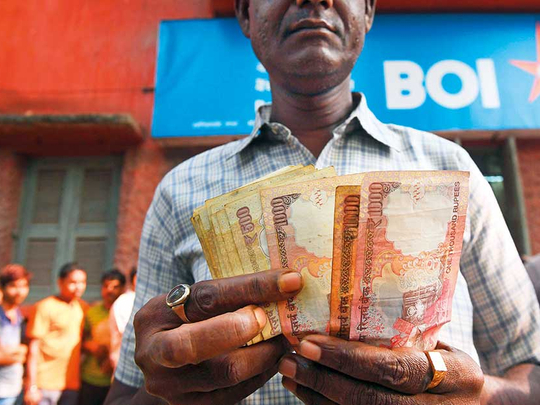
Mumbai: The Reserve Bank of India’s currency intervention policy during Governor Urjit Patel’s term is allowing for greater two-way rupee movement than under his predecessor, according to JPMorgan Chase & Co.
“The RBI under Dr Patel has been more open to rupee strength,” Brijen Puri, JPMorgan’s head of markets for India, said in an interview. That’s a key shift in policy which, under Raghuram Rajan, was focused on keeping the currency in a “reasonably fixed depreciating band,” he said.
Patel’s strategy is probably guided by the central bank’s focus on keeping consumer-price gains under 4 per cent in the medium term. A weaker rupee would risk importing inflation just when surging oil prices are adding to concerns over slowing growth and potentially worsening public finances in Asia’s third-largest economy. India imports two-thirds of the crude it needs.
“We have probably seen the best of the inflation down cycle and it will go up from here,” Mumbai-based Puri said last week. “The current RBI regime seems to have a lot more thought about weaker rupee feeding down into inflation.”
The recent rise in crude oil prices may add three-to-five basis points to retail inflation for the rest of the financial year that ends March 31, Soumya Kanti Ghosh, group chief economic adviser at State Bank of India, the nation’s largest lender, wrote in a November 8 report.
The central bank didn’t answer an email seeking comments. It has maintained that it intervenes only to curb volatility and doesn’t target any particular level for the rupee.
Rajan took charge of the central bank during the 2013 taper tantrum, with his three-year term largely taken up in tackling the fallout from the sell-off in emerging nations’ assets and restoring stability in local markets. India’s foreign-exchange reserves rose about $93 billion (Dh341 billion) during his tenure to around $368 billion in early September 2016. The stockpile is now at $399 billion (Dh.
Foreign ownership of debt
Puri expects the pace of the RBI’s reserves addition to slow as concern over rising equity valuations and India’s restrictions on foreign ownership of its debt cause overseas inflows to moderate.
The rupee has climbed 4.7 per cent so far this year, on course for its first advance since 2010. The appreciation has been fuelled by global funds, who have poured billions of dollars into India, drawn by its high bond yields and optimism that Prime Minister Narendra Modi’s policies will spur economic growth. The currency rose 0.1 per cent to 64.8975 per dollar Thursday.
“The pace of appreciation will not be sustained,” Puri said. “The RBI would want to show two-way volatility, because from a regulatory perspective, you don’t want complacent investors as that can cause a systemic shift in times of trouble, which will be difficult to handle.”
The “fair value” of the rupee is slightly weaker than where it is currently, he said, adding that an annualised rupee depreciation of 2 per cent-2.5 per cent on an average is needed to maintain a stable exchange rate vis-a-vis India’s trading competitors.












